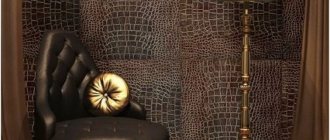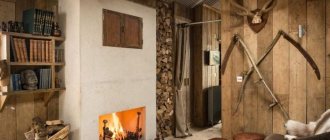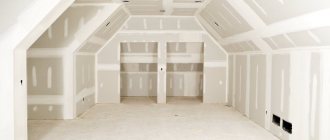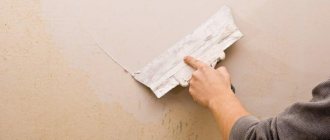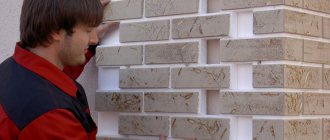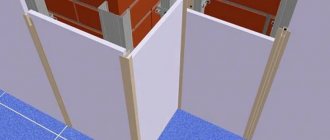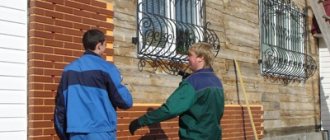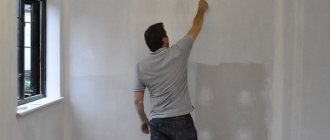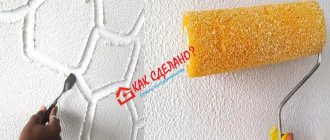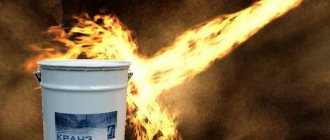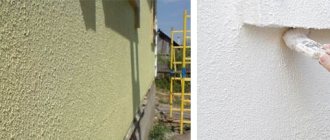Most people initially regard wallpaper as an extremely flammable material and do not have any special requirements for its fire resistance. But if this point of view may be true for residential premises, then for public buildings there are strict fire safety standards and regulations.
Because of these rules, for a very long time it was not allowed to decorate the walls of hospitals, restaurants and office buildings with wallpaper. But now there are wallpapers that, while retaining all the advantages of this type of finish, are nevertheless non-flammable, or at least resistant to fire.
Which wallpaper fully complies with fire safety standards? What are the advantages and disadvantages of fire-resistant wallpaper? Which coatings can be classified as fire retardant, and which ones are simply fire resistant? Our article is devoted to these and other issues.
Ways to increase fire resistance
To increase the fire resistance of walls and other structures in the house, they are coated with non-flammable substances, and fire-resistant materials are used for finishing. Products consisting entirely of inorganic substances or their predominant amount are known to be the most heat-resistant. Some mineral reagents are used as fire retardants.
There are a small number of organic compounds that are not flammable and do not support combustion. Some of the non-flammable organic solvents are even used in firefighting.
You can protect walls and structures from fire:
- using heat-resistant primer, pastes, plasters;
- painting walls with fire-resistant paints;
- pasting with heat-resistant wallpaper;
- installing sheets or slabs that do not react to fire;
- impregnating materials with fire retardants.
The decision to choose a fireproof material for walls should be made after assessing financial possibilities and discussing the project with craftsmen and designers . Reasonably chosen non-combustible finishing will help insulate the room and increase sound insulation.
Which wallpaper corresponds to fire safety
The following types are considered fire-fighting:
- non-flammable fiberglass wallpaper - the product threads are made from a sand-dolomite mixture with the addition of lime and soda.
- Cons: difficult to stick.
Advantages: environmentally friendly, made from natural ingredients, have the highest fire resistance parameters, suitable for public buildings, preschool institutions, hotels;
- multi-component or liquid wallpaper - high fire resistance parameters. Consist of cotton fibers, glue, NG additives, fire retardants. When exposed to heat, they are non-toxic, do not support flames, and smoke generation is extremely low;
- vinyl wallpaper with non-woven backing. They often have low parameters (KM3), so the scope is limited; educational institutions (kindergartens, schools, secondary and higher education) and premises with 16 or more people are excluded from it. and more;
- cork wallpaper is not prone to burning, fire resistance is enhanced by fire retardant impregnation during manufacturing. Used in premises with staff up to 300 people. Usually have the value B1 (non-flammable);
- based on vermiculite and mica, usually paper or textile. May have some level of fire resistance, but are rarely recommended as thoroughly protected.
KM classes 4 and 5 are not considered by experts as fireproof, but use is possible if this does not contradict the airbag.
For evacuation passages, except for structures with V st. and cl. C3, set of standards 21-01.97 (SP 112) in paragraph 6. 25 prescribes the use of materials with fire safety no worse than the following:
- 1 – G, V; 2 – D, T: for halls of elevator structures, on l/k;
- 2 – G, V; 3 – D, T or 2 – G, D, T; 3 – B: common corridor areas, halls, foyers.
Table 28 of Federal Law 123 specifies the qualities of wallpaper that meet fire requirements and regulates its use in standard premises:
| Functional fire hazard subclasses | Number of floors/height (m) | KM | |
| Lobbies, staircases, halls near elevators | General corridors, halls, foyers | ||
| F1.2 – 2.3, 2.4, 3.1, 3.2, 3.6, 4.2 – 4.4, 5.1 – 5.3 | Until 9/until 28 | KM2 | KM3 |
| From 9/to 17 or from 28/to 50 | KM1 | KM2 | |
| From 17/from 50 | KM0 | KM1 | |
| Ф1.1, 2.1, 2.2, 3.3 – 3.5, 4.1 | Doesn't matter | KM0 | KM1 |
Table 29 Federal Law N 123 for halls:
| Subclass (F) of the object | Capacity (persons) | KM |
| Ф1.2, 2.3, 2.4, 3.1, 3.2, 3.6, 4.2, 4.3, 4.4, 5.1 | from 800 | KM0 |
| 300 – 800 | KM1 | |
| 50 – 300 | KM2 | |
| up to 50 | KM3 | |
| Ф1.1, 2.1, 2.2, 3.3, 3.4, 3.5, 4.1 | from 300 | KM0 |
| 15 – 300 | KM1 | |
| up to 15 | KM3 |
Primary treatment with paste or plaster
Wall decoration, taking into account safety, can be carried out by combining several non-combustible materials. Each area of the room has its own characteristics. It can be located near stoves, fireplaces or at a distance.
The choice of wall finishing method depends on the number of storeys in the house, the method of laying electrical wiring, and the material from which the supporting structures are made.
Heat-resistant primary treatment of walls is appropriate in almost all cases. Compositions of primers, plasters, and special pastes, depending on the consistency, can be spread, sprayed, or sprayed. The thickness of the coating with non-flammable paste reaches 1 cm, with plaster - up to 4 cm.
The main feature of non-flammable finishing compositions is the absence of the usual Portland cement and quartz sand. Conventional cement, when hardened, forms calcium hydroxide, which, in the event of a significant increase in temperature during a fire, decomposes to oxide.
Under the influence of moisture or water flow, which happens when extinguishing a fire, the oxide swells due to hydration. The coating breaks and cracks.
As a result, fire can reach the base of the structure, the wall, and spread throughout the house. It becomes difficult to put it out. The formation of cracks is facilitated by the transformation of sand molecules from one modification to another, more voluminous.
Non-combustible materials for wall decoration include liquid glass, building gypsum, aluminous or pozzolanic types of cement. Special types of clays are used as aggregate, for example vermiculite, volcanic products such as pumice or tuff; fine fractions of expanded clay, metallurgical slag, power plant ash.
The compositions can be filled with mineral fibers, for example, kaolin wool. The most affordable option for non-combustible material for preparing walls is a mixture of “lean” clay available in the area with sulfite-yeast lye dissolved in water. The humidity of the room treated with such composites should not exceed 65%.
Foam glass is a non-flammable thermal insulation material
Foam glass blocks are made from glass powder that has undergone a sintering process. The chemical composition of foam glass is identical to the composition of classic glass and includes oxides of silicon, calcium, sodium, magnesium, and aluminum.
Foam glass
Foam glass is a completely non-flammable material. It contains no oxidizing or organic components. When foam glass is heated to high temperatures, it only melts (like ordinary glass) without releasing gases or vapors.
The service life of foam glass blocks while maintaining their protective characteristics is more than 100 years.
Furnace coating
Heated surfaces are also coated with special heat-resistant primers. The purpose of such treatment is not only and not so much protection from fire, but also to improve the adhesion of the subsequent layer of paint and reduce its consumption.
Thanks to the use of heat-resistant primer, the protection of radiators, metal fireplaces and stoves from corrosion processes is increased.
There are several types of non-flammable compositions based on glycol varnishes, phosphates, and silicates. When choosing a specific finishing material, you need to know exactly the maximum heating temperature of the surface. Heat-resistant primer for furnaces has restrictions on use, which are indicated in the accompanying documents.
Advantages of thermal wallpaper
The advantages of thermal wallpaper, as well as luminous wallpaper, are primarily in its originality and uniqueness. In terms of external characteristics, thermal wallpaper cannot be compared with ordinary paper wallpaper, although this type of finish has many different design options.
In addition, it is possible to achieve the so-called “living walls” effect using only thermal wallpaper or similar types of wallpaper. Well, a wide assortment and a rich selection of thermal wallpaper in design and pattern will allow even the most imaginative designer to remain satisfied, what can I say.
Source
Thermal paint application
Fire-resistant wall paint contains fillers and pigments. A non-flammable composition for wall finishing, after hardening, forms a film that performs protective and decorative functions. Thermal paint is an inorganic complex of alkali metal and silicon oxides.
Talc, special types of clay, and mineral fibers are used as fillers. There are two components offered for sale that must be combined and mixed before use. The resulting non-flammable mixture should be used within a maximum of 12 hours.
There is fire-resistant paint intended for interior surfaces, in particular walls, as well as for exterior coatings.
Finally, a little about myths
In most cases, these are just prejudices; it’s enough to learn more about them:
The second common myth concerns cost:
Note. Thanks to such conditions, repairs have to be done much less frequently, which means that it is enough to spend a lot of money once to ensure that the room remains ideal for a decade.
Such modern fire-resistant wallpaper fits perfectly on almost any surface, it can be concrete, wood, brick and other materials. You can learn more about fire-resistant wallpaper from the video in this article.
Source
Types of heat-resistant wallpaper
For final finishing of the walls, you can use heat-resistant wallpaper. They are produced using several technologies. There are metallized roll materials that are made as follows.
The interlining, which is a product made from cellulose and synthetic fibers, is covered with thin aluminum foil. The top is coated with non-electrically conductive paint or embossed. Non-flammable wallpaper has interesting patterns and performs decorative functions. The material is durable.
Another type of non-flammable wallpaper is made from fiberglass. All components are of natural origin. The material washes well, has a beautiful appearance, and is suitable for premises of any purpose. The fire safety certificate confirms the high fire-retardant ability of non-combustible wallpaper.
Well, if they don’t burn, that’s okay. Let's say even micro temperature sensors are present there. Well, how can they tell us about a fire if there is no fire alarm in the house? Then it turns out that this wallpaper is useless for houses without an alarm system. Why overpay for something that won't work. There are many more wallpaper options that do not burn, such as liquid wallpaper. They are affordable and are available in every hypermarket. You can choose any according to your taste.
So plaster doesn’t burn either, why pay more?) a lot of things don’t burn at all)
Such an invention... I have a fire alarm in my house and it completely and completely copes with its responsibilities. But buying some dubious wallpaper for such cosmic money is stupid! Moreover, their appearance is not the most chic. You could also think about the design.
I wouldn’t really trust CHINESE wallpaper, it’s such an innovative “new product”. Let them try to stick them in their homes. And then we’ll check how many of the 10 houses burned down and the alarm wallpaper didn’t help. I wouldn’t be surprised if this number is 10! In order to protect your home, you need a normal fire alarm... but not Chinese wallpaper
Source
Fire resistant fabrics
Wall decoration can be done with classic drapery. The existing fireproof fabric, practically indistinguishable in appearance from conventional woven materials, allows you to embody any ideas of designers.
The material is made by weaving polymer fibers. Fire retardant impregnation gives the products non-flammable qualities. Fire-resistant woven materials are used for finishing the walls of any premises, car interiors; They are used to make professional clothing for firefighters, rescuers, and metallurgists.
Fire retardants can impart non-flammable properties to almost any material. The effect is due to the ability to absorb the thermal energy of the flame, spending it on melting the fire retardant additive. Plus, gases are released that do not support combustion.
What is thermal wallpaper?
Thermo wallpaper is an innovative new type of wall decoration. A special substance applied to the wallpaper allows it to react to heat, changing the design or pattern on its surface.
Previously, an article in the construction magazine samastroyka.ru already talked about similar wall finishing options. We were talking about the so-called luminous wallpaper, which is capable of accumulating light during the day and glowing in different colors at night, creating an amazing effect.
And although the operating principles of thermal wallpaper and luminous wallpaper are different, they still have some similarities. It concerns, first of all, originality and unusualness, because such a finishing option can not be found in all apartments and houses.
The principle of operation of thermal wallpaper
As mentioned above, special thermal ink, which is applied to wallpaper, reacts to heat. At first glance, it may seem that there are no other colors, shades or patterns on the thermal wallpaper. However, this is only at first glance.
When thermal wallpaper is exposed to sunlight or direct heat, more and more details begin to appear on it: leaves and flowers bloom on trees, faded bushes acquire brighter colors.
Thermal wallpaper reacts to an exposure temperature of only 15°C plus. Moreover, to achieve the full effect of manifestation, the temperature in the room must reach 20 or even more degrees.
Manufacturers and prices
- Basalt fiber panels cost 1 sq. meter - from 390 to 690 rubles, depending on the decor of the front side, produced by ESCAPLAT;
Rolled fire-resistant non-woven material - cost of 1 linear meter from 112 rubles, produced by OgneuporEnergoHolding, LLC, Moscow;
- Non-flammable composition for plastering walls with a volume of 20 liters at a price of 410 rubles per bucket, produced by a company from Perm.
- Author: kbcf
- Date of: 16.08.2012
- Subcategory: Wallpaper for walls
- Answers: 2
Save the people. Mom started renovations, she lives in her house with stove heating, the heater from the stove goes into the living room, the wall gets very hot, 5 years ago they put tiles on this area, now the tiles are swollen with a mound and look like they will fall off, the wallpaper near the tiles tears every winter. Tell me what we should do with this wall, and whether it is possible to glue glass wallpaper onto the heating surface.
- Since the question is not about gluing wallpaper onto the stove directly, but only about gluing the wall surface adjacent to it and not heated. In this case, it is enough to glue a strip of wallpaper located near the stove (on a wall cleaned of whitewash or lime) using PVA glue. Accordingly, before gluing the wall, it is necessary to prime it with an aqueous solution of the same glue. And yet, it is highly undesirable to cover the stove with tiles. The surface of the tile is almost mirror-like and its heat output is extremely low, so it is hot on the stove, and there is no inherent ambient heat in the house.
